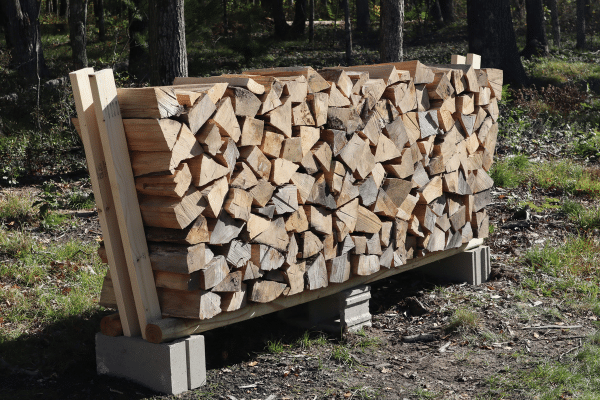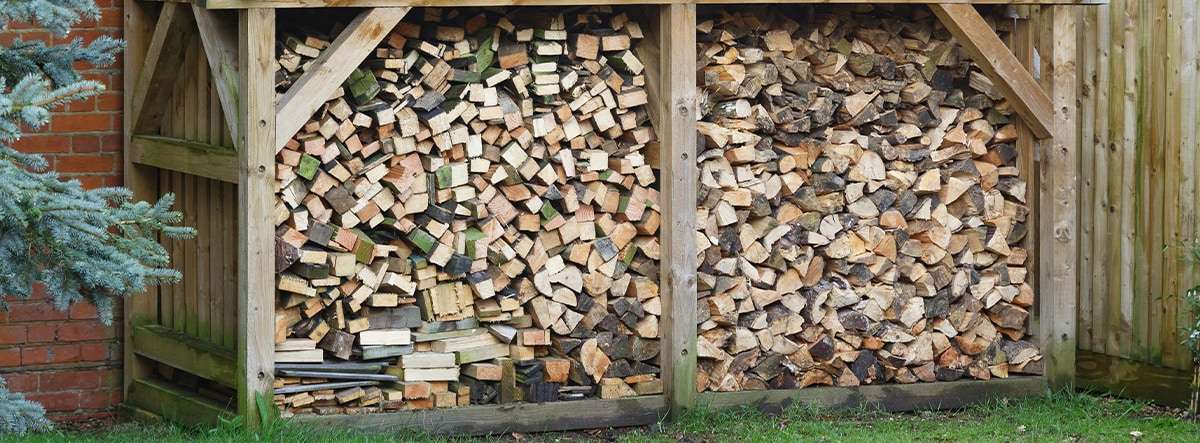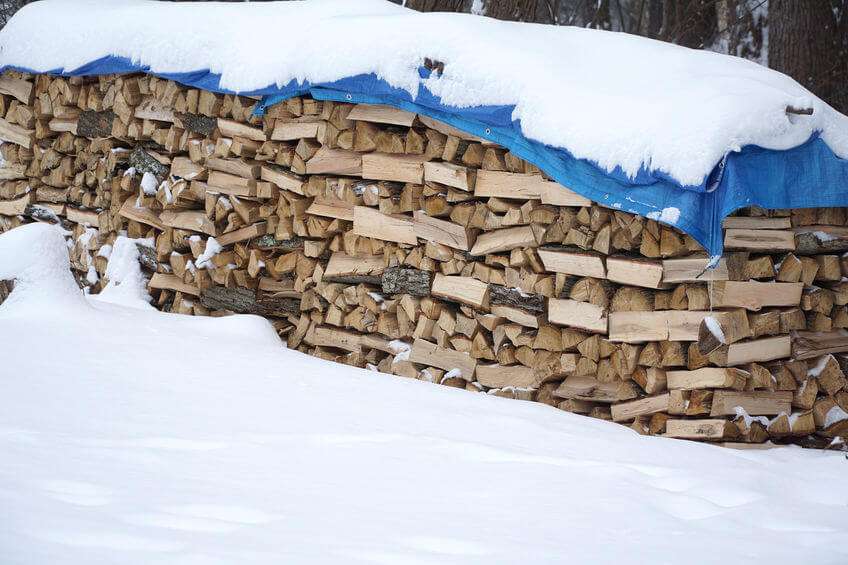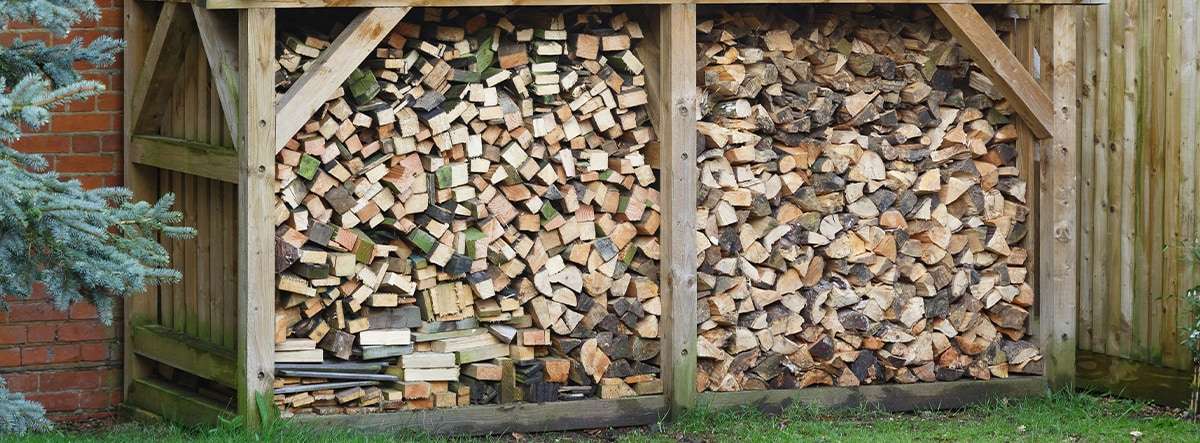During the winter months, many people rely on firewood to heat their homes and stay warm. However, storing firewood outside requires some precautions to ensure it remains dry and ready for burning. It’s important to neatly arrange the firewood, with the outer surface exposed to air, and consider using a log rack or designated log store to elevate the wood and prevent ground contact. Curing the firewood and protecting it from the elements are crucial steps in the storage process. By following these precautions and regularly inspecting the woodpile, you can ensure that your firewood is dry and ready for efficient burning during the winter season.
Choosing the Right Storage Method
When it comes to storing firewood outside during winter, there are several important factors to consider. Storing firewood properly is crucial to prevent problems with heating and burning, ensuring that you have a ready supply of dry, well-seasoned wood when you need it. In this article, we will explore different storage methods to help you choose the right approach for your firewood.
Using a Log Rack
One option for storing firewood outside is to use a log rack. A log rack is a sturdy structure specifically designed for holding and organizing firewood. By using a log rack, you can elevate your firewood off the ground, improving air circulation and preventing moisture absorption.
Benefits of Using a Log Rack
There are several benefits to using a log rack. Firstly, it keeps the firewood neatly arranged, making it easier to access and use. Additionally, the open design of a log rack allows for better airflow around the firewood, helping it to dry out more quickly. This is especially important if you have freshly cut or green wood that needs to go through the curing process.
Properly Arranging Firewood on a Log Rack
When using a log rack, it’s essential to arrange the firewood properly. Start by placing the larger pieces on the bottom, creating a stable base. Stack the wood in a neat and orderly manner, with the bark side facing upward. This helps to shed any moisture that may be present and provides additional protection against the elements.
Improving Airflow with a Log Rack
One of the main advantages of using a log rack is the improved airflow it provides. The open design of a log rack allows air to circulate freely around the firewood, helping it to dry out more quickly. Proper airflow is essential for curing firewood and ensuring that it is ready to burn efficiently.
Preventing Moisture Absorption on a Log Rack
By keeping the firewood off the ground, a log rack helps to prevent moisture absorption. Moisture can seep into firewood from the ground, leading to dampness and rot. Elevating the wood on a log rack helps to keep it dry and minimize the risk of moisture-related issues.

Using a Wooden Log Store
Another option for storing firewood outside is to use a wooden log store. A log store is a dedicated structure that provides protection from the elements while allowing for proper air circulation.
Advantages of Using a Wooden Log Store
Using a wooden log store offers several advantages. Firstly, it provides a designated space for storing firewood, keeping it organized and protected. With a log store, you can create a dry and well-ventilated environment for your firewood, improving its quality and longevity. Additionally, a log store can enhance the aesthetic appeal of your outdoor space, adding a rustic and charming touch.
Ensuring Proper Air Circulation in a Log Store
Proper air circulation is crucial when using a log store. Without adequate airflow, the firewood may not dry out properly, leading to moisture retention and potential issues with burning. To ensure proper air circulation, make sure there are gaps or openings in the sides and back of the log store. This will allow air to flow freely through the structure, helping the firewood to cure effectively.
Protecting Firewood from Rain and Snow in a Log Store
One of the key benefits of using a log store is its ability to protect firewood from the elements. Rain and snow can quickly dampen firewood, making it difficult to burn efficiently. By storing the firewood in a log store, you can shield it from moisture and keep it dry. Make sure the roof of the log store extends beyond the sides to prevent rainwater from seeping into the structure.
Maintenance and Inspection of a Log Store
Regular maintenance and inspection of your log store are essential to ensure its longevity and the safety of your firewood. Check for any signs of damage, such as loose boards or deteriorating structure, and repair them promptly. Additionally, remove any debris or leaves that may accumulate in or around the log store, as they can pose a fire hazard.

Using an Open-Ended Wood Shed
An open-ended wood shed offers a balance between protection from the elements and proper air circulation. It provides a sheltered space for storing firewood while allowing air to flow freely through the structure.
Benefits of an Open-Ended Wood Shed
Using an open-ended wood shed offers several benefits. Firstly, it provides protection from rain, snow, and direct sunlight, preventing excessive moisture absorption and ensuring the firewood remains dry. Additionally, the open ends of the shed allow for optimal air circulation, helping the firewood to cure properly.
Balancing Protection and Air Circulation in an Open-Ended Wood Shed
The key to using an open-ended wood shed effectively is to strike the right balance between protection and air circulation. The structure should provide sufficient coverage to keep the firewood dry and shielded from the elements, but the open ends should allow for the free flow of air. This balance will ensure that the firewood cures effectively and is ready for efficient burning.
Arranging Firewood in an Open-Ended Wood Shed
When arranging firewood in an open-ended wood shed, it’s important to stack it neatly and tightly. Start by placing the larger pieces on the bottom, creating a stable base. Stack the wood in rows, with each row facing in the opposite direction to provide stability. Make sure to leave enough space between the rows to allow for adequate airflow.
Preventing Moisture Build-up in an Open-Ended Wood Shed
While an open-ended wood shed provides protection from the elements, it’s still essential to prevent moisture build-up inside the structure. Make sure the shed is elevated off the ground to avoid ground contact and potential moisture absorption. Regularly inspect the shed for any signs of moisture or condensation and address any issues promptly.

Using a Tarp
Covering your firewood with a tarp can provide an additional layer of protection against the elements. However, it’s important to use a tarp correctly, and there are specific considerations to keep in mind.
Seasoning Firewood before Covering with a Tarp
Before covering your firewood with a tarp, it’s crucial to ensure that it is fully seasoned. Seasoning firewood involves letting it dry out naturally, typically for at least six months to a year. Covering green or freshly cut wood with a tarp can trap moisture, inhibiting the curing process and leading to rot. Make sure your firewood is properly seasoned before you cover it.
Properly Covering Firewood with a Tarp
When covering firewood with a tarp, it’s important to do it correctly to provide effective protection. Place the tarp over the firewood, ensuring that it covers the entire stack and extends beyond the sides. Secure the tarp tightly to prevent it from being blown away by strong winds. However, it’s crucial to leave the sides of the tarp open to allow for proper ventilation. This will prevent moisture build-up and ensure the firewood remains dry.
Importance of Ventilation with a Tarp
While a tarp can provide protection from rain and snow, proper ventilation is essential when using a tarp cover. Without adequate airflow, moisture can become trapped, leading to dampness and potentially causing the firewood to rot. The open sides of the tarp allow air to circulate around the firewood, preventing moisture build-up and ensuring the wood remains dry.
Monitoring and Maintaining the Tarp Cover
Regular monitoring and maintenance of the tarp cover are important to ensure its effectiveness. Inspect the tarp regularly for any signs of damage or wear and tear. Repair or replace the tarp as necessary to maintain its protective qualities. Additionally, remove any debris or snow that may accumulate on top of the tarp to prevent excessive weight and potential damage.

Curing and Protecting Firewood
Aside from choosing the right storage method, curing and protecting firewood are essential steps to ensure its quality and efficiency for burning.
Importance of Curing Firewood
Curing firewood involves the process of letting it dry out naturally before use. Properly cured firewood burns more efficiently, produces more heat, and generates less smoke. By allowing the firewood to cure, you are removing excess moisture, making it easier to ignite and reducing the risk of creosote buildup in your chimney or stovepipe.
Proper Time Needed for Firewood to Cure
The time needed for firewood to cure can vary depending on various factors, including the type of wood, its moisture content, and the surrounding environment. In general, it’s recommended to allow firewood to cure for at least six months to a year. During this time, the wood should be stored in a dry and well-ventilated area, protected from rain, snow, and excessive moisture.
Creating a Dry Storage Area for Curing Firewood
To properly cure firewood, it’s crucial to create a dry storage area. Whether you choose to use a log rack, wooden log store, open-ended wood shed, or tarp, ensure that the storage method provides protection from the elements and adequate airflow. Proper ventilation is key to allow the firewood to dry out effectively and reach the desired moisture content for efficient burning.
Monitoring Moisture Content of Cured Firewood
Even after firewood has been cured, it’s important to monitor its moisture content regularly. Invest in a moisture meter to check the moisture levels of your firewood periodically. The ideal moisture content for firewood is typically below 20%. If your firewood is still too damp, continue to allow it to cure in a well-ventilated storage area until it reaches the desired moisture level.

Conclusion
When it comes to storing firewood outside during winter, taking the necessary precautions is essential to ensure efficient burning and heating. By choosing the right storage method, such as a log rack, wooden log store, open-ended wood shed, or tarp, you can protect your firewood from the elements while promoting proper air circulation. Curing firewood and protecting it from moisture absorption are crucial steps to ensure its quality and efficiency. By following these guidelines and maintaining regular inspection and maintenance, you can ensure a ready supply of dry, well-seasoned firewood for a warm and cozy winter.




